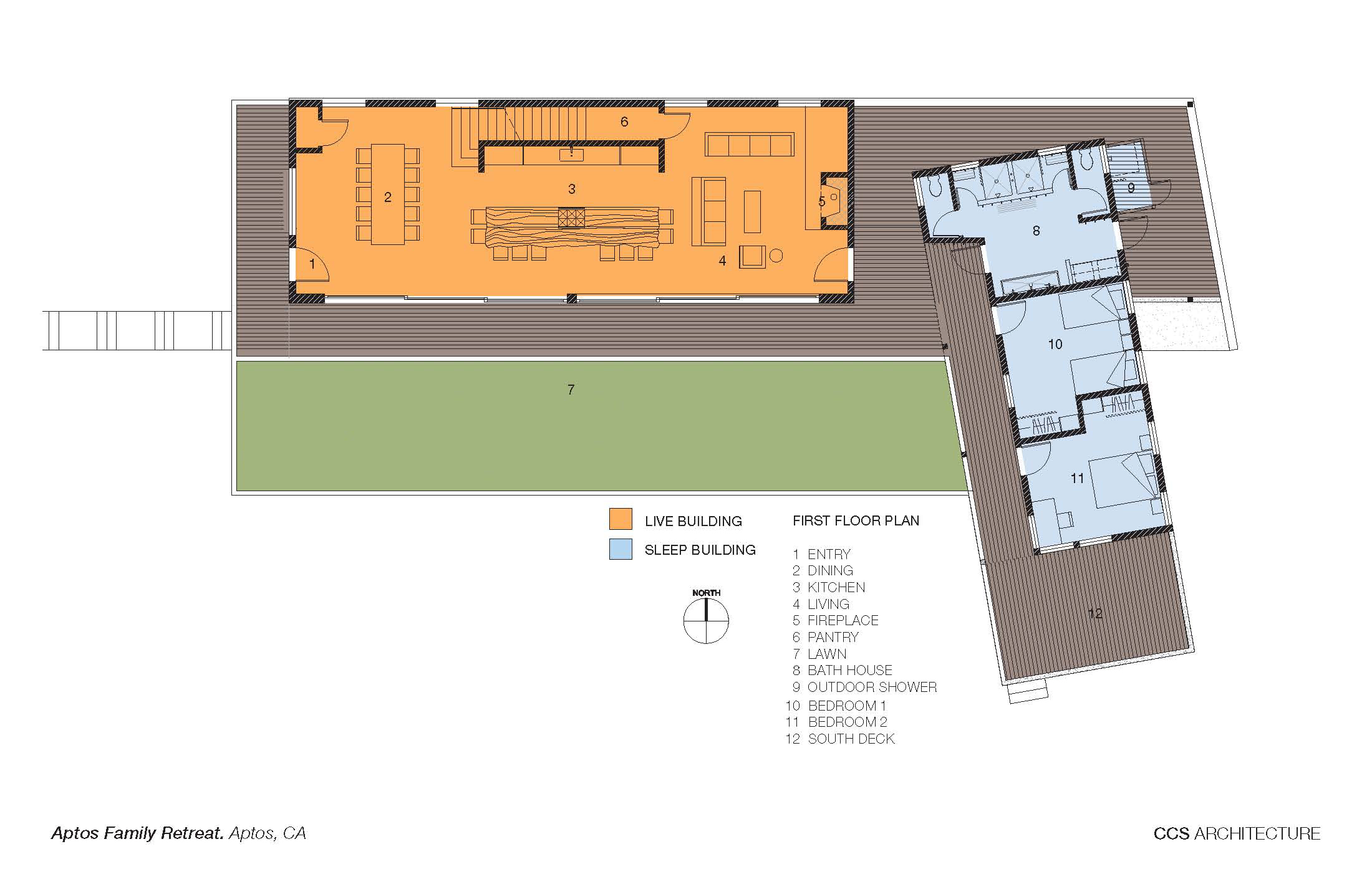Architects: Showcase your next project through Architizer and sign up for our inspirational newsletter
A certain image is conjured when one hears the word “estate.” Usually it’s one of wealth and opulence, but in architectural terms it can be as simple as referring to a home that occurs across several separate structures as opposed to just one. This is usually done to delineate a separation of activities such as dining, sleeping and recreation, but what’s more important in such layouts is that they treat the out-of-doors as if they’re a part of the house, erasing distinctions between inside and out.
This subtle but sensitive act of appropriation can root a house to its site in ways a single building can never accomplish. While the standalone house is symbolic of a fight for domestication against the wilds of nature, the homes in this collection live in harmony with their surroundings — as do their occupants. They represent a sensitive approach to the philosophy of dwelling, treating the landscape not as something to be lived on, but rather within.



Summerhill Residence by Edmonds + Lee Architects, Kenwood, Calif., United States
A courtyard between three buildings acts as the central design element tying together this estate. A main house, guest house and garage all define a rectilinear lawn and pool acting as an extension of the interiors of all three buildings. The buildings themselves feature crisp edges between walls of opaque wood and transparent glass, giving them qualities of outdoor shelter rather than constructed habitat.



Lakeside Retreat by GLUCK+, Adirondack Mountains, N.Y., United States
A rambling program for this family retreat spills down the side of a hill, weaving in and out of the landscape at key junctures. Less prominent uses, such as a garage and guest houses, occur towards the top of the site, while the lakefront at the bottom is reserved for a boathouse, family house and recreation building, which functions as the social heart of the estate.



Villa Skäret by Griab, Höganäs, Sweden
The layout for this waterside villa has been distributed among four separate buildings linked by a wooden deck with a tree growing in the center. The box-like form of each building is broken up into expanses of sliding glass, blurring distinctions between inside and out.



Flint House by Skene Catling de la Peña, Buckinghamshire, United Kingdom
This site’s inherent qualities and surrounding landscape informed the design for an estate placed on it. Materially referring to a type of stone quarried nearby, the house’s separate buildings appear to rise from the earth as if they were individual outcroppings of rock. The social spaces of the house occur at an open section in a clearing between them, with the private sleeping and studying spaces disappearing into the trees at the outer edges of the buildings.


North Bend House by Johnston Architects, North Bend, Wash., United States
Notions of restoring the landscape were of vital importance for this home, which weaves the site’s surrounding forest between two separate buildings. Connected by a metal footbridge, the home’s relatively small footprint was achieved through the use of a miniature campus typology.



Aptos Retreat by CCS Architecture, Aptos, Calif., United States
A slew of buildings compose this rustic compound, helping to reinforce its promotion of various outdoor activities. A swimming pool, sauna, dining house and recreational “clubhouse” overlap each other between open spaces that act as an extension of interior living spaces. An overhang between the home’s two primary buildings defines an inner courtyard between its most frequently used spaces.



A House in Three Buildings by Nikos Smyrlis Architect, Athens, Greece
Classical imagery was employed to tie together the buildings in this housing complex. Formal allusion to various archetypes of monumental civic architecture unifies the main building (which hosts communal gathering spaces such as dining and sitting rooms) with resident and guest houses. The three buildings are sited on axes such that they frame views towards four horizons, further emphasizing the symbolic weight of their siting and design.
Architects: Showcase your next project through Architizer and sign up for our inspirational newsletter
The post The Joy of Division: 7 Homes Split Between Multiple Buildings appeared first on Journal.